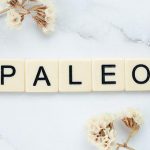If you’ve got a food allergy or intolerance, your diet is, of course, restricted through no choice of your own. In contrast, people choose to become vegetarian for any number of reasons. These reasons can range from the desire to see if avoiding meat will lead to better health or more energy, to the commitment to holding to strong religious or ethical beliefs, to concerns about the safety of the food supply.
Whatever the motivation, combining multiple restricted diets can be challenging, and many people with food allergies are concerned about whether it’s possible for them to get adequate nutrition on a vegetarian diet.
Whether those concerns are justified depend in large part on which foods to which they’re allergic. Dairy and eggs, for instance, are excluded in conventional vegan fare, and many vegans eat healthy, varied diets.
Other food allergies, however, pose greater challenges for vegetarians. Vegetarian foods that cause allergies can be roughly divided into non-meat protein sources, grains, and fruits and vegetables, although some foods (for instance, wheat) fit into more than one category.
What Is A Food Allergy?
If you have an allergy to a particular food, you experience a reaction that involves your immune system. This is different to a food intolerance, which doesn’t involve your immune system.
The symptoms of food allergies range from unpleasant ones, like rashes or vomiting, to life-threatening anaphylaxis, involving breathing difficulties and collapse. Some reactions occur immediately – up to two hours after eating. There is also a delayed type of reaction, which can occur 2-48 hours later, usually involving skin or gut symptoms.
Going Vegan With A Food Allergy
A food allergy can make it more challenging to make dietary changes, including the transition to a vegan diet. However, the level of difficulty partly depends on the nutritional impact of avoiding a particular plant food.
Careful planning may be required to compensate for the exclusion of a staple food in vegan diets, such as peanuts, seeds, nuts, peas, lentils, soya or other beans. Here are some examples of potential considerations:
- Beans, peas, lentils, peanuts, soya products and certain seeds and nuts are sources of good quality protein, as well as of iron and zinc.
- Peanuts, nuts and seeds contain healthy fats. For example, walnuts, ground linseed (flaxseed), hemp seeds and chia seeds are really rich sources of omega-3 fat.
Due to the potential effects on nutrient intakes, it’s important to be confident that any dietary restrictions are necessary, particularly if you’re avoiding multiple plant foods. Accessing the best support is key.
Is Vegan Food Safe For People With Food Hypersensitivities?
Vegan does not mean allergen-free so always treat vegan food as if it was any other food. If you have an intolerance or allergy check labels and ingredients.
If you have a food hypersensitivity (food allergy or food intolerance), you should treat vegan food the same way you treat all food, by checking that it doesn’t contain the allergen(s) you need to avoid either as an ingredient or a contaminant. Always remember: Vegan does not mean allergen-free. It means food that is not made from ingredients derived from animals.
What Allergens Could Be In Vegan Food?
Regulated allergens should be highlighted on a food label ingredients list if they are used as ingredients. Nine are plant based – mustard, soy, gluten, nuts, peanuts, celery, sesame, lupin and sulfur. Other allergens – eggs, fish, milk, crustaceans and molluscs – are animal based and should not be used in vegan foods.
For any food allergen, there is always the chance it could get into the food as a contaminant during manufacturing or handling. Check the product label for any statements such as ‘May contain traces of milk’ or ‘May contain soya’. Because vegan food is not produced with food allergic or food intolerant customers in mind, you need to take these statements seriously.
How To Cope With Allergies to Proteins
You need protein for cell repair, growth, and development. Unfortunately, many common sources of protein on the vegetarian diet include allergens—the most common are soy, wheat (as found in seitan), peanuts, and tree nuts.
Women typically require 5 to 6 ounces of protein daily, and men require 6 to 6.5 ounces daily, although some people may have higher or lower protein needs. This equates to 45 grams a day for women and 55 grams for men.
Most plant-based foods, even green vegetables such as broccoli and cabbage, contain at least a small amount of protein. But some foods—dairy products, legumes, and some grains—are much denser sources than others.
Protein is one of the most common initial concerns of many people upon beginning a vegetarian diet, but in fact, your body’s protein needs are generally easy to meet with plant sources.
In general, people eating a sufficient number of calories would only be deficient in protein if their diets were highly dependent on a few very low-protein foods. That hasn’t changed. Most people, even vegetarians, meet and even exceed their protein needs without even thinking about it.
A few common allergens, however, are so frequently used as vegetarian proteins that they deserve special consideration. Soy, in the form of tofu and tempeh, is a vegetarian staple. You’ll find it in packaged vegetable broths, meal substitute bars, frozen meals, and as protein-rich “soy nuts” or “soy nut butter.”
If you’re allergic to soy, it is possible to get adequate protein, but you’ll need to be sure to plan your meals to get your recommended daily amount of protein per day. You’ll also find that many prepared vegetarian foods, especially dairy substitutes, are off-limits.
You’ll need to avoid meat substitutes, which are generally made from soy (some are made from wheat; check labels). The other food most commonly used as a direct substitute for meat is wheat, in the form of seitan (wheat gluten). It’s sometimes sold as patties and used in vegetarian chilis. Wheat is also a common binder in legume-based vegetarian burgers. In addition, peanuts and tree nuts are sometimes used to make vegetarian burgers, though they’re not common meat substitutes.
If you’re allergic to one or more high-protein vegetarian protein sources, you’ll need to meet your protein needs in other ways. Amaranth, quinoa, and teff are top choices as vegetarian allergen-free protein sources. These three grains aren’t very well-known in America but are suitable for vegan diets, high in protein, and gluten-free.
Whole-grain amaranth and quinoa are fairly easy to find, and quinoa-corn pasta blends are becoming more widely available at major supermarkets. Teff, an Ethiopian grain, may be more difficult to find, but some health food stores or grocery co-ops may stock it.
Alternatives For Those Allergic to Grains
Grains, especially whole grains, are an important source of carbohydrates, which your body uses for energy. Many also are rich in B vitamins. The U.S. The Department of Agriculture recommends that adults consume 3 ounces of whole grain products daily.
However, many people are allergic to particular grains, including (most commonly) wheat, corn, and barley. And when you’re a vegetarian, you’ll find many vegetarian entree options in recipes and at restaurants that are grain-based: pasta, polenta, couscous, risotto, soups with pasta or barley, or corn-based Latin fare.
Wheat is the only grain among the “big eight” most common food allergens, and it is used in vegetarian diets as both a grain and protein source. Pasta, couscous, bread, and many cereals are among the foods off-limits to vegetarians with wheat allergies or celiac disease.
However, largely due to the increase in people being diagnosed with these conditions, there are excellent substitutes on the market for almost any wheat-based food imaginable. Most supermarkets carry gluten-free pasta, cereal, and bread. And any foods that are labeled gluten-free are safe for barley allergies as well.
Corn, on the other hand, is a highly difficult food allergy to live with. Not only is corn itself a very common grain (think: corn chips, polenta, tortillas, and grits), it’s also extremely common as an ingredient in processed foods.
Corn syrup, dextrose, and xanthan gum are but a few of the ubiquitous ingredients derived from corn. In fact, because the list of foods made from corn grows so frequently, it’s difficult to offer a complete list. And unlike wheat, corn isn’t covered by labeling laws that require that its presence is clearly noted on ingredient lists.
So-called “alternative” grains, which have become more widely available over the last decade, can add much-needed variety to your diet. In addition to amaranth, quinoa, and teff, you might try millet, sorghum, and cassava. Rice is another common grain that is considered less allergenic.
READ MORE: Health Benefits Of Sprouted Grains
Allergies To Fruits And Vegetables Easier To Manage
Fruits and vegetables are valuable sources of micronutrients (vitamins and minerals) and antioxidants. Your body needs varying amounts of different vitamins, and the U.S. The Department of Agriculture recommends eating two cups of fruit and two-and-a-half cups of vegetables each day to help you get those important nutrients.
Some of the more common allergenic fruits and vegetables include celery, tomatoes, garlic, apples, melons, and citrus. Some people who have pollen allergies may have reactions to foods that contain similar proteins. For instance, people with an allergy to birch pollen might also react to raw apples, peaches, and pears. These reactions are rarely serious.
Fortunately, unlike many of the foods already mentioned, fruits and vegetables don’t tend to be common “hidden ingredients” in processed foods. In general, you’ll find them mentioned by their own names on labels and used in fewer foods than some other allergens.
The biggest difficulty people in this category face is an allergy to aromatic vegetables — onions, garlic, celery, or similar vegetables that are used to add flavor to soups or other cooked foods. These vegetables appear in countless recipes and are found in many processed foods.
In particular, you’ll likely find it difficult to buy packaged vegetable broth, a staple food that is used as the basis not only for soups but for grain cookery, if you’re allergic to certain vegetables. Try making your own so you can use whatever aromatic and flavorful vegetables you can eat.
Otherwise, beyond avoiding your allergens, you’ll need to be aware of the vitamins and minerals that are especially abundant in the foods you can’t eat and find other sources of those nutrients. For example, if you can’t eat leafy green vegetables and you’re following a vegan diet, you may need to be particularly careful about your iron intake.
Meal Planning and More
If you’re avoiding common allergens on a vegetarian diet, consider planning your meals ahead at least some of the time to ensure you’re eating a variety of foods and that you’re getting enough of the nutrients you’ll be missing in the foods you can’t eat.
You might try making a list of foods you’d like to add to your diet and cooking one or two a week. This is a good way to ease into eating new grains or vegetables without overwhelming yourself with new tastes.
For foods such as soy or corn that tend to be staples of a vegetarian diet, or for multiple allergies to relatively common foods, strongly consider working with a dietitian or a nutritionist to ensure that you’re eating a healthy diet.
These professionals may be able to recommend overlooked sources of good nutrition, help determine safe and allergen-free sources of supplements your body may need, and assist with meal planning.
Some dietitians and nutritionists have particular expertise with food allergies and intolerances; contact a local allergist or allergy support group to see if they have recommendations for a practitioner in your area.
Professional Support
If you have concerns about food allergies, seek advice from your local healthcare team, who can refer you for specialist diagnosis and management. Dietitians are in the best position to provide individualized dietary advice as part of this process. They can also support people with an existing food allergy diagnosis who are interested in eating a vegan diet.









